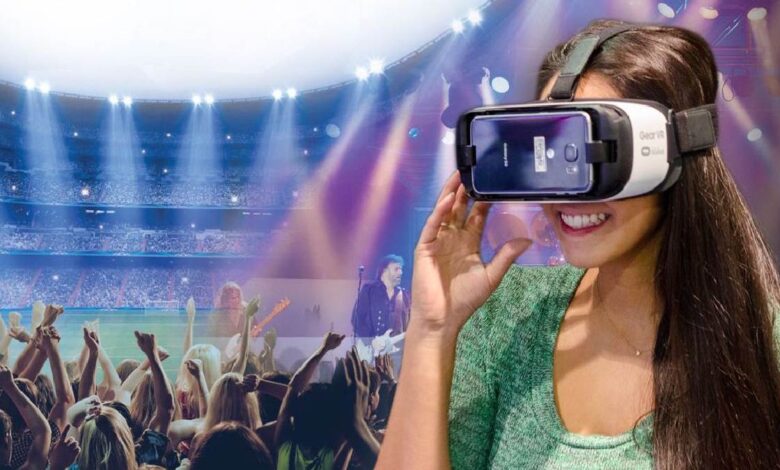
This article will focus on augmented reality. Our readers will be able to get some useful AR/VR tips. In addition, we will touch on the topic of VR Games.
Virtual reality is a world created by technical means, transmitted to a person through his sensations: sight, hearing, smell, touch and others. Virtual reality simulates both exposure and responses to exposure.
Augmented reality (AR) is a technology that complements the real world by adding any sensory data. Despite the name, these technologies can both bring virtual data into the real world and remove objects from it. The possibilities of AR are limited only by the capabilities of devices and programs.
It is worth immediately clarifying the difference between AR and VR:
VR blocks the real world and immerses the user in the digital universe. If you put on a headset and suddenly find yourself in the middle of a zombie fight instead of a living room, then this is VR.
AR adds elements of the digital world to the real world. If you are walking down the street and suddenly a Dragonite pokemon appears on the sidewalk in front of you, then this is AR.
History of AR/VR
It is generally accepted that the development of virtual reality began in the 50s of the last century. In 1961, the Philco Corporation developed the first Headsight virtual reality helmets for military purposes, and this was the first application of the technology in real life. But based on today’s classification, the system would rather be attributed to AR technologies.
Morton Heilig is considered to be the father of virtual reality. In 1962, he patented the world’s first virtual simulator called “Sensorama”. The device was a bulky device that looked like 80s slot machines and allowed the viewer to experience an immersive virtual reality experience, such as riding a motorcycle through the streets of Brooklyn. But Heilig’s invention caused distrust among investors and the scientist had to stop development.
In 2000, thanks to the addition of AR technology to Quake, it became possible to chase monsters through real streets. True, it was possible to play only armed with a virtual helmet with sensors and cameras, which did not contribute to the popularity of the game, but became a prerequisite for the emergence of the now famous Pokemon Go.
The real boom began only in 2012. On August 1, 2012, a little-known startup Oculus launched a Kickstarter campaign to raise funds for the release of a virtual reality helmet. The developers promised users a “full immersion effect” through the use of displays with a resolution of 640 by 800 pixels for each eye.
The necessary $250,000 was collected in the first four hours. Three and a half years later, on January 6, 2015, pre-sales of the first serial consumer virtual reality helmet Oculus Rift CV1 began. To say that the release was expected is to say nothing. The entire first batch of helmets was sold out in 14 minutes.
This was the symbolic beginning of the boom in VR technology and the explosive growth of investment in this industry. Since 2015, virtual reality technologies have become a truly new technological Klondike. All of the best VR headsets have been released since then by Meta, HTC, and Sony. New VR headsets from Apple and Google should be arriving in the future, packed with even more features. The ultimate end goal for these companies is to release a set of augmented reality smart glasses, which are slim and can be worn all day long.
Investors in the VR and AR market
What is the easiest way for a startup to find funds to develop a project? Of course, to attract an investor. In one infographic, CB INSIGHTS collected funds that invest most actively in VR and AR technologies. The top three, of course, are foreign companies:
Rothenberg Ventures is the most active investor in the industry, with a focus on so-called “frontier technologies”. River Accelerator is investing in VR and AR startups at the entry level. One of their latest deals was with VR Medtech, a company that develops surgical robotics for Vicarious Surgical.
BoostVC is an accelerator focused on blockchain technology and virtual reality. Boost’s latest investment is Vizor, a Finland-based VR content creation platform.
Vive X is an accelerator from VR headset manufacturer HTC. Their latest accelerator featured start-ups from all industries, from corporate tools (Snobal) to football athletic training (Soccerdream).
Use of virtual and augmented reality
Virtual reality is an industry in which infrastructure and technology are developing in parallel with the development of content. After all, if there is a helmet or virtual reality glasses, there must be something to look and do through them.
Therefore, we can identify several main directions for the development of the industry, depending on the content and scope:
- games;
- movie;
- sports broadcasts and shows;
- social networks;
- marketing education;
- the medicine;
- trade and real estate;
- industry and military-industrial complex
Here is a detailed market overview for each of these items. And below we talk about how exactly VR and AR technologies are used in different industries.
If you have carefully read the part devoted to the history of virtual reality, then you already know that developments began primarily for military applications. Since then, VR developments have become better, and now they are beginning to be used not only in military affairs, but also in other areas. For example, for the treatment of mental disorders. Experts from Harvard University have published a review article that examines the effectiveness of modern VR methods for the treatment of mental illness, and especially anxiety neuroses and phobias. And in February last year, a group of scientists from the UK and Spain developed a treatment for depression using virtual reality and demonstrated its effectiveness.
Perhaps the most useful VR developments are made in medicine. Medical students no longer need to hone their skills on cadavers, instead there are virtual simulators with tactile feedback.
There are also interesting solutions for virtual and augmented reality in marketing. And if you think marketing and advertising is just a waste of time and money, check out Bill Clinton’s End Poverty Foundation’s Inside Impact project. To raise money for the development of East African countries, the foundation created a film shot with a 360-degree camera.
When viewing, viewers enter Kenya along with Bill Clinton and his daughter Chelsea. Raising the topics of HIV / AIDS, malaria, the lack of maternity hospitals and the prospects of solar energy, the viewer is practically led by the hand through the streets, schools and other institutions, involving and pushing for empathy.



